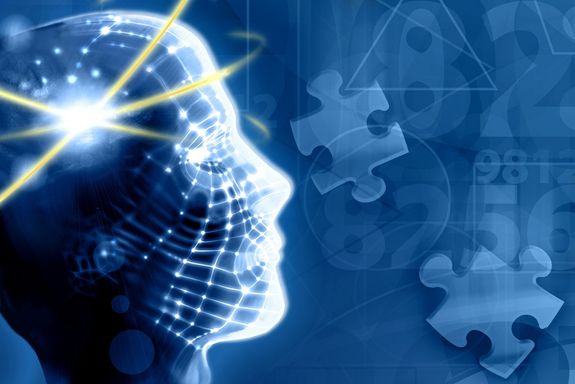Boy's Shrinking Brain Baffles Doctors

Jason Egan does not walk, talk or eat like most 9-year-olds. He gets around in a wheelchair and depends on a feeding tube threaded into his stomach. He makes signs with his hands to communicate and has mustered the word "mom" on occasion. Although he cannot always articulate his feelings, he clearly feels a great deal. He is often seen smiling and laughing, especially when his father pushes him around the block near their home in Victoria, Australia.
So far, no one has figured out exactly what is wrong with Egan. His doctors know that the boy's brain has been shrinking since birth, but he has tested negative for all known neurodegenerative disorders. Jason Egan may have a disease that is new to science.
At first, Egan's doctors diagnosed him with cerebral palsy—an umbrella term for a group of related movement disorders. Children with cerebral palsy may have difficulty standing, moving, hearing, seeing and speaking. Their muscles are unusually tense and refuse to stretch, and their joints lock in place; some children experience tremors or seizures as well. In many cases, such children's brains were damaged during pregnancy or childbirth, usually in a way that limited oxygen to developing neurons. Symptoms of cerebral palsy may appear as early as three months—difficulty crawling, for instance—and usually make themselves known by age two.
One of the defining features of cerebral palsy is that it is nonprogressive, which means that the severity of symptoms remains relatively constant over one's lifetime. Egan's symptoms, however, have changed over time. In 2009, around his sixth birthday, Egan began to lose what little sign language he had and stopped saying "mom." He started shaking and he did not seem to feel pain anymore, even when he injured himself.
Brain scans confirmed that something was amiss. In 2010 Victoria Rodriguez-Casero, a neurologist at The Royal Children's Hospital in Victoria, scanned Egan's brain and compared the new image with pictures taken several years earlier. Egan's whole brain was smaller than before—much smaller. When Egan's doctors first diagnosed him with cerebral palsy, they found that his cerebellum—an ancient part of the brain that controls movement—was unusually small. In many forms of cerebral palsy, the cerebellum is damaged or smaller than average, but it is not supposed to shrivel like a grape in the sun. And cerebral palsy certainly does not involve continual withering of the entire brain. Egan's original diagnosis was inaccurate. The brain shrinkage had gone unnoticed until then because once a patient is diagnosed with cerebral palsy, there is little reason to keep checking the brain—the organ is not supposed to deteriorate.
To figure out what was really ailing Egan, Rodriguez-Casero tested him for numerous neurological disorders. He did not meet the criteria for any of them. He did not have neuroaxonal dystrophy, a developmental disorder caused by a genetic mutation that impedes speech and movement in ways that resemble cerebral palsy. There was nothing wrong with his white matter, a mesh of glial cells and sheathed tails of neurons that transmit outgoing signals in the brain. After Rodriguez-Casero finished testing Egan for what she thought were the most likely diseases, she moved on to just about everything else: an exhaustive series of blood, genetic and electrophysiological tests for mitochondrial, metabolic, genetic and neural disorders—none of which offered anything conclusive.
"There is not one test he hasn't had done," Rodriguez-Casero says. "He doesn't qualify for cerebral palsy, because the disease is progressing. The bottom line is, I don't know yet and I hope we will figure out what's happening to him."
Sign up for the Live Science daily newsletter now
Get the world’s most fascinating discoveries delivered straight to your inbox.
About two months ago, Egan received his most recent magnetic resonance imaging (MRI) scan. His brain seems to have stopped shrinking—it is roughly the same size as it was a year ago. The discovery brought relief, but not an explanation.
Right now, Rodriguez-Casero's colleague Richard Leventer and other neurogeneticists are analyzing the boy's DNA to identify any novel mutations. He may have a genetic mutation that doctors have not yet written into textbook medical knowledge because its role in disease is not well understood. "If we identify a new mutation, we will look worldwide for anyone who is studying that particular gene," Rodriguez-Casero says.
For now, Egan spends his time at home with his family, periodically visiting the hospital for brain scans and monitoring. "Often children with neurodegenerative disorders lose their awareness and their ability to interact and show emotion," Rodriguez-Casero says. "But not so with Jason. Even people who haven't met him before know how much he feels. You can see the child behind the disease."
This article was first published on Scientific American. © 2012 ScientificAmerican.com. All rights reserved. Follow Scientific American on Twitter @SciAm and @SciamBlogs. Visit ScientificAmerican.com for the latest in science, health and technology news.













